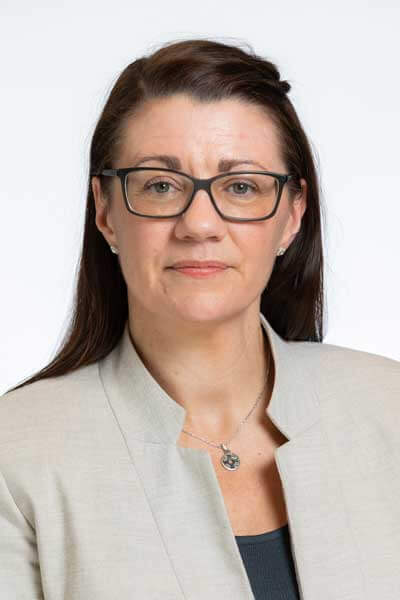The function of the Chief Nursing Office position is to strategically lead the ongoing development of the nursing and midwifery professions, including their contribution to wider healthcare policy, writes Rachel Kenna, Chief Nursing Officer, Department of Health.

The Chief Nursing Office was established in October 2013 and the Chief Nursing Officer (CNO) is a senior management appointment within the Department of Health at Assistant Secretary General level. The CNO’s role at Assistant Secretary General level also has responsibility for other key areas, including strategic workforce planning and professional regulation. The position of CNO within the Department of Health’s senior management team provides an extremely important and exciting opportunity for the CNO to develop and strengthen collaborative working across Government and the wider health and public services. As well as providing strategic leadership as CNO, I provide expert nursing and midwifery advice to the Minister for Health, the Department of Health, the broader health system and regulatory and professional bodies. To assist with managing the different elements of the role the office is built on a partnership model with three Deputy Chief Nursing Officers, supported by three Nursing & Midwifery Project Officers and civil servants working together to develop health policy.
I was appointed to this role in May 2020, with my appointment interestingly coinciding with the World Health Organizations designation of 2020 as the International Year of the Nurse and the Midwife. This designation is of huge importance, as there has never been a time when the collective international contribution of the professions of nursing and midwifery have been more visible than during this ongoing pandemic. In my view, nurses and midwives must be at the forefront of designing, delivering, and evaluating the impact of health system responses on patient care and outcomes.
Nurses and midwives are critical to and must remain central to informing and driving healthcare reform across every level, from Department of Health to frontline care delivery and across the entire landscape of health and social care policy.
Covid-19 has changed many aspects of our lives. However, in devising my strategic priorities for the office, I am confident that the professions of nursing and midwifery will emerge from this international emergency having demonstrated the ability to respond with creativity and urgency, buoyed with renewed determination to use this experience to continue to build a dynamic patient focused system in line with Sláintecare. Nurses and midwives are critical to and must remain central to informing and driving healthcare reform across every level, from Department of Health to frontline care delivery and across the entire landscape of health and social care policy. The solidarity, the interprofessional connectivity to a holistic approach to care and the enduring focus on protecting the public are deep rooted values within the professions of nursing and midwifery that remain palpable despite such a challenging environment.
Our Priorities
As Chief Nursing Officer, I have several priorities that are based on the learnings from nursing and midwifery leaders and other healthcare professionals with whom I have worked. These priorities are based on a belief that the contribution of nurses and midwives is key to enabling the full economic value of healthcare provision across multiple care settings. This is and will continue to be possible through the professions informing policy development and just as importantly, leading policy change locally and nationally. From my extensive managerial and clinical experience as a registered children’s and general nurse (RCN/RGN) and more recent roles in the Department of Health, I understand the essential link between speaking the language of policy and its translation to patient care and patient outcomes. Key to ensuring that the professions of nursing and midwifery maximise the opportunities ahead to reform care delivery will be having a dynamic and robust evidence based workforce in place, regulatory and education frameworks that will support flexibility to meet healthcare demands and enabling technical solutions for care to be delivered in new ways.
The development of future nursing and midwifery leaders is a crucial enabler to delivery of health service reform.
Since my appointment, I have placed a particular emphasis on developing an office that will be informed by the workforce I have the honor of leading. Collaboration, listening to the voices of the profession and engaging with international colleagues and my CNO counterparts in other jurisdictions will be the approach taken in drafting a new CNO Office Strategic Plan. The development of future nursing and midwifery leaders is a crucial enabler to delivery of health service reform. The resilience and capacity of some of these future leaders has been evident through the ‘Nightingale Programme,’ where I have, given the year that is in it, the opportunity to mentor a number of wonderful nurses and midwives, at early stages of their careers, on various aspects of leadership development and on contributing their insights and ideas to the strategic work of the office.
Vision for the Future
The experience of being in this post for almost five months, has required me to lead the professions through what will be reflected by society as a challenge like no other. However, it has also reinforced for me the essential contribution of nursing and midwifery in leading the delivery of Sláintecare and many other aspects of the Programme for Government.
On the October 15, it was announced by the International Council of Nurses that the theme for International Nurses Day 2021 is a ‘Vision for Future Healthcare’. This theme reflects the impact of Covid 19 on the health system and on the nursing and midwifery professions. As the largest healthcare profession, it is critical that we must play an integral part in planning the future of healthcare. I looks forward to undertaking this journey with the professions as I begin to devise the Chief Nursing Office Strategy for 2021 and beyond.

